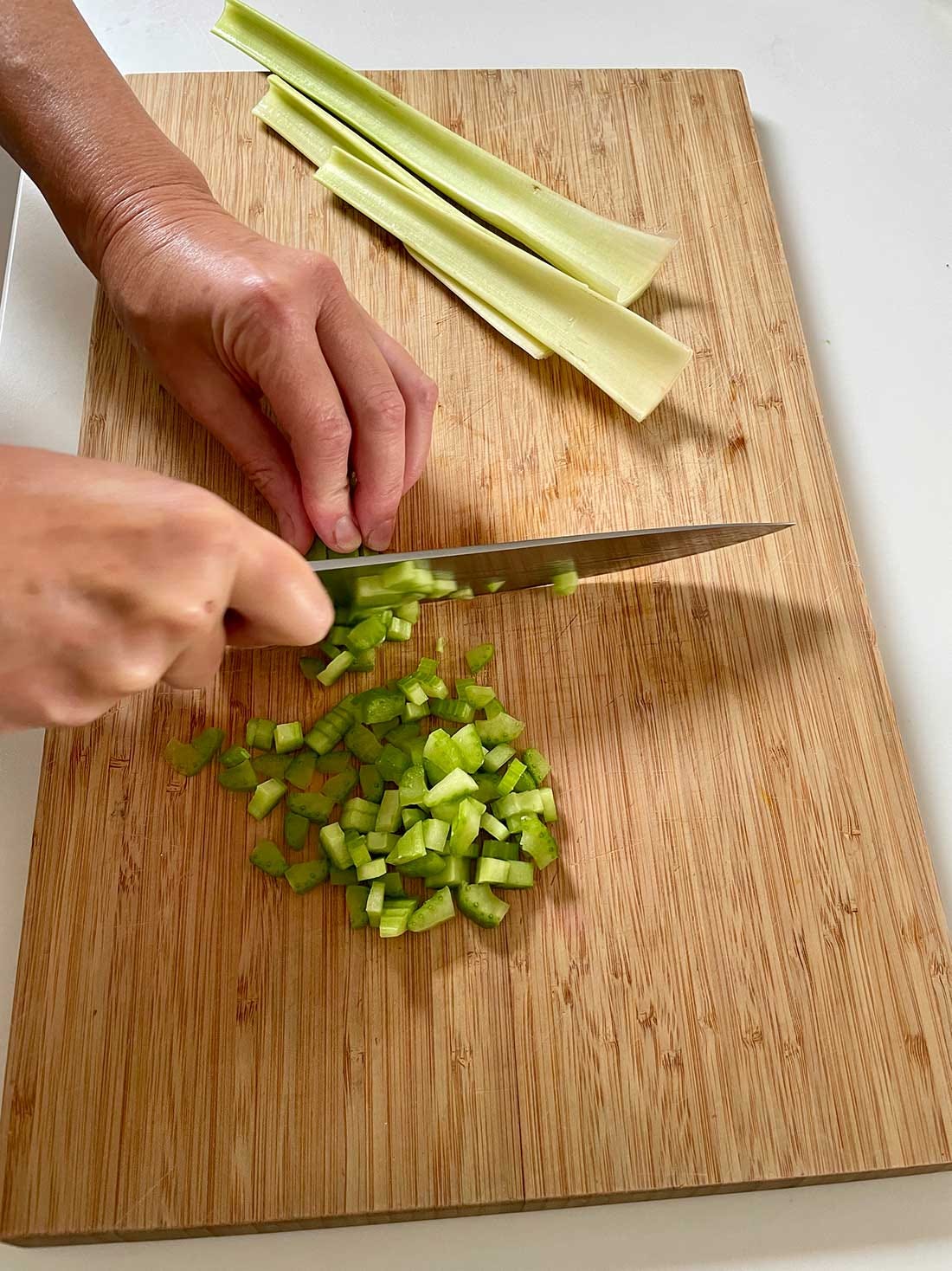Welcome to issue #23 of Susanality, a free weekly newsletter. Thanks for being here! If you’re loving this newsletter, please consider a paid subscription. Having your support would mean a lot to me, as I continue to work hard to bring you fresh content on a weekly basis with additional posts and recipes going out to paid subscribers at least twice a month. Thanks again!
Sometimes a simple technique can be more useful than a recipe. For someone who doesn’t have a fluent understanding of technique, grasping a single method teaches them broader lessons about cooking. I was reminded of this recently. It’s a long story, but worth it.
At the end of our kind of long vacation—or exile, since our house was rented—Steve and I went to Fire Island to visit our dear friend Meryl Waitz. We trekked down from Mount Desert Island, Maine—with a stopover in Providence, Rhode Island to visit my niece at school and to take a break from driving. On our first ferry of the day (caught by the skin of our teeth, I might add), as we crossed the Long Island Sound, I called Meryl to confirm we would indeed be—happily—arriving in time for lunch. She asked, “How does chicken salad sound?” I said it sounded great. On arrival, we quickly settled in and sat right down to lunch. It looked and tasted especially good after several weeks on the road. At some point I remarked how tender and moist the chicken was, which jogged Meryl’s memory. “YOU taught me how to cook chicken like this.” We both thought it kind of funny that it had come full circle.

I had no memory (at first) of teaching Meryl how to poach chicken. After all, it was more than twenty years ago! Then I remembered it started with one of those panicked calls I receive from friends looking for a cooking lifeline. I would have been in the middle of a busy workday at Martha Stewart Living. No matter how busy I was, I would take the time to give a friend menu ideas, solve a sourcing conundrum, send a recipe, explain a technique, or just generally talk someone down from a cooking cliff. Meryl was on one such cliff. She was on her way to Fire Island for her then boyfriend’s family reunion. If you know anything about Fire Island, you know that food supplies are limited and expensive, so she was in the habit of bringing food and supplies with her when she visited. She was cooking for a crowd, and she wanted to make a big chicken salad, the one she had learned to make at her waitressing job at the Upper East Side café “Cheese And….” (Yes, there really was a place with that name!) It was a “gourmet shop” where the waitstaff helped make the food, like, for instance, this particular chicken salad.
So, Meryl called me that day with terror in her voice. “Where can I buy a lot of cooked chicken? I have to make chicken salad for a LOT of people!” Apparently I said, “Don’t BUY chicken. Make it! I’ll tell you how.” I dictated my method for poaching boneless, skinless chicken breast, which she dutifully wrote down. I put special emphasis on what I told her was The Most Important Part of the recipe. In order to poach the chicken—not boil it, which would make it tough, dry, and stringy—there should be “NOT EVEN A BUBBLE” when she put the chicken into the liquid or at any time during the cooking process. I also instructed her to return the chicken to the poaching liquid and refrigerate overnight to keep it juicy before she transported it.

She obeyed all my instructions, and the chicken salad was a big hit with her boyfriend’s family. She’s been making it ever since and now relies on memory, not the written recipe, to execute what has become one of her personal specialities. She admits that her cooking skills and confidence in the kitchen have increased a lot since then, and it was gratifying to learn that I had been a part of that.

PS - I wanted to remind you that all of the recipes in my newsletters live permanently here. You can also scroll through public recipes on my site or keep up with me on Instagram. Or better yet, you can support me by ordering my book, Open Kitchen.
Meryl’s Chicken Salad
Click here for a printable version
Serves 6 to 8
The basic poaching technique outlined in the first three steps can be used to make any chicken salad. Adding the vegetables not only flavors the chicken but also yields a light but flavorful broth that can be used for soups and other dishes. Meryl usually serves this on a plate with a green salad, but I decided to pile it on a piece of toast with arugula to make a tartine. A little messy to eat, but delicious!
To poach the chicken:
1 large onion, peeled and quartered
1 teaspoon black peppercorns
1 large carrot, cut in half
4 stalks celery (center hearts, preferably), with leaves
1 shallot
1-2 bay leaves
2 teaspoons kosher salt
4 boneless, skinless chicken breasts
To make the salad:
1½ Granny Smith apples, cut into ½ inch cubes
4 stalks celery, diced
¾ cup mayonnaise
1-2 tablespoons mango chutney, to taste
2-2½ teaspoons curry powder
½ teaspoon turmeric
Salt and pepper to taste
Fill a pasta pot half full of water and add the onion, peppercorns, carrot, celery, shallot, bay leaves, and salt. Bring to a boil and simmer over low heat for 20 to 30 minutes. Turn down to the lowest heat so that it isn’t bubbling at all.
Add the chicken breasts and push them so they are completely submerged. Add a little water if necessary to cover them. Cook over the lowest possible heat, so that the liquid does not bubble, for 30 minutes. At this point, you can cut a chicken breast in half to make sure it’s cooked through, and if not, cook a few minutes longer.
Remove the chicken breasts with tongs and let them cool completely on a plate. Turn heat to high and reduce the stock until slightly concentrated. Cool slightly, strain, and store for future use. Discard the solids. You can also store the chicken in the cooled broth for a day or so if you want.
Cut each chicken breast into four lengthwise strips and then into half-inch chunks. Combine with the apple and celery in a mixing bowl. Add the mayonnaise, chutney, curry, and turmeric, and toss to combine. Add salt and pepper to taste and toss again. Chill at least one hour so the flavors can blend.







Thanks Michael! It is fairly close nventional but it was one of those retro things that shouldn't be forgotten! Cool that you're going there- I know those guys!
Wow. I feel like I was really there. You've written about a fairly conventional sounding recipe and brought it to life. Hopefully my trip to Kenhonkson Cook House cabin at the end of the month will be just as illustrative.